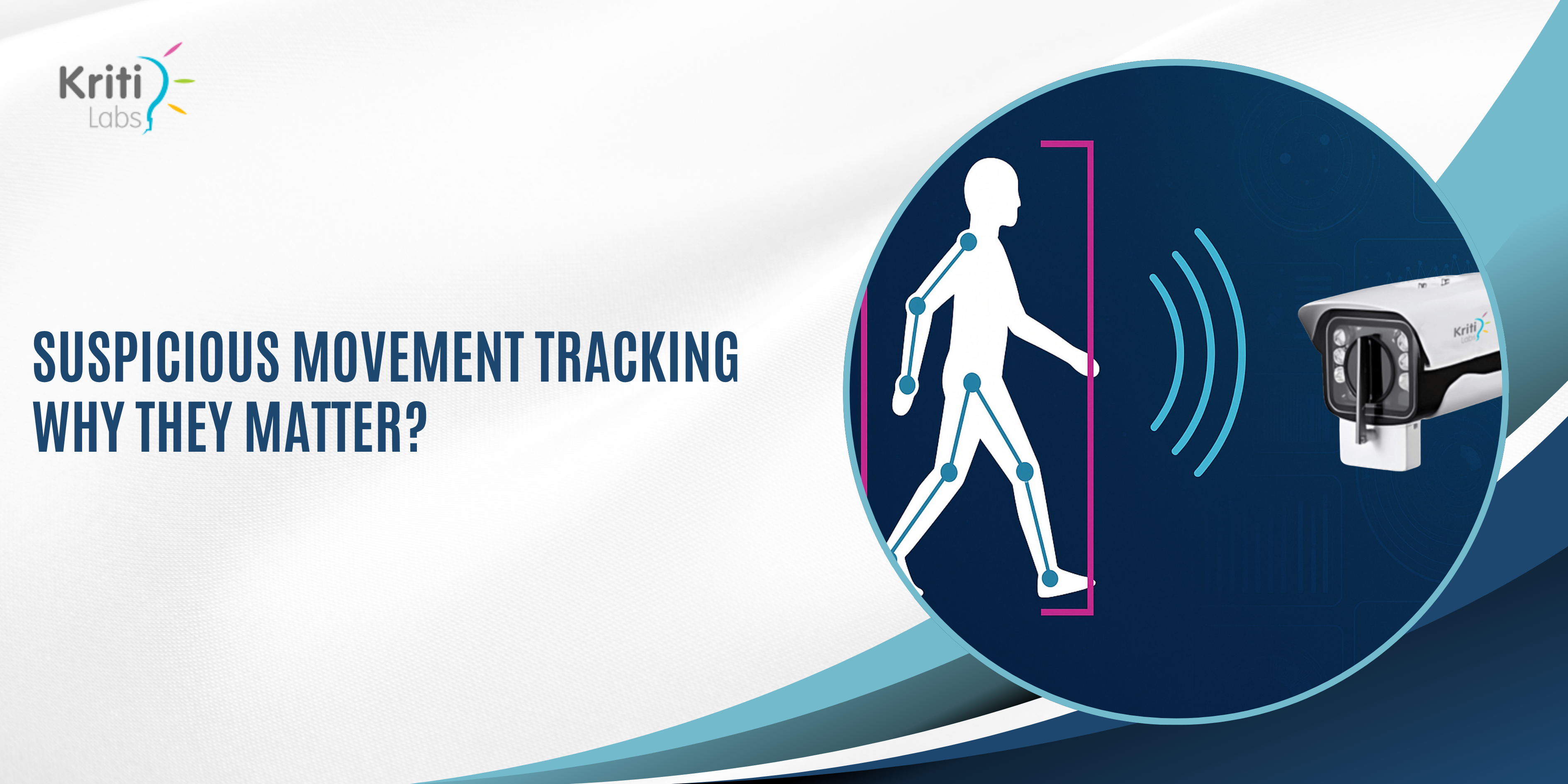Suspicious Movement Tracking: Why They Matter?
Security has always been a top priority for businesses, governments, and public spaces. Yet traditional surveillance systems often rely heavily on human monitoring, which can miss subtle signs of risk due to fatigue or sheer scale. In today’s fast-moving environments, a single oversight can result in theft, trespassing, or a safety incident.
This is where suspicious movement tracking comes in. By using AI-driven video analytics, organisations can automatically detect unusual or unauthorised behaviour and respond instantly. Suspicious movement tracking enables businesses to move from passive surveillance to proactive security management, reducing risks and strengthening operational safety.
What is Suspicious Movement Tracking?
Suspicious movement tracking is the process of identifying and analysing abnormal or potentially harmful activities within a monitored environment. Instead of merely recording footage for later review, AI systems detect suspicious actions as they happen and alert operators immediately.
Examples of suspicious movements include:
- Loitering near ATMs or entry gates.
- Trespassing into restricted areas.
- Leaving or moving unattended baggage in public spaces is prohibited.
- Employees moving into hazardous or unauthorised zones.
- Unusual movement patterns in warehouses or factories.
Why Suspicious Movement Tracking Matters?
The importance of suspicious movement tracking goes beyond just spotting unusual activity. It directly supports business continuity, workforce safety, and compliance.
Prevention of Theft and Intrusion
Businesses face constant risks from unauthorised access or theft attempts. Suspicious movement tracking can detect intruders before damage is done.
Public Safety
In airports, train stations, and malls, loitering or unattended objects can indicate security threats. Automated detection allows faster intervention.
Workforce Protection
In industries like oil & gas or manufacturing, employees entering hazardous areas without authorisation can lead to accidents. Suspicious movement alerts help enforce safety.
Regulatory Compliance
Specific sectors are required to maintain strict surveillance and reporting. AI-driven suspicious movement tracking provides audit-ready records of security incidents.
By proactively identifying potential risks, businesses avoid costly incidents, protect people, and build safer environments.
How Suspicious Movement Tracking Works?
At the heart of suspicious movement tracking is AI video analytics combined with IoT-enabled infrastructure. Here’s how it typically functions:
- Detection – AI-powered cameras monitor video streams and identify deviations from normal behaviour.
- Analysis – Machine learning algorithms classify the activity as suspicious.
- Alert – The system triggers real-time notifications to security staff or facility managers.
- Response – Integrated workflows allow actions like locking doors or dispatching security teams.

Unlike traditional systems that only record footage, AI ensures operators are immediately aware of potential threats, reducing response times and increasing effectiveness.
The Role of AI and IoT in Suspicious Movement Tracking
AI-Based Video Analytics
Cameras embedded with AI detect loitering, sudden direction changes, or unauthorised entries that humans may overlook.
IoT Sensors
Integrated sensors track occupancy, movement, or environmental changes. For example, a door sensor combined with video footage can confirm if someone accessed a restricted area.
Edge Processing
Data is processed near the camera, reducing latency so alerts happen instantly without reliance on central servers.
Unified Dashboards
AI and IoT feed data into a central platform, giving managers a complete picture of suspicious activities across facilities.
Together, AI and IoT transform security from reactive observation to proactive prevention.
Industry Applications of Suspicious Movement Tracking
1. Logistics and Warehousing
Warehouses handle constant asset and workforce movement. Tracking suspicious activity like unauthorised access to storage zones or unusual cargo handling helps reduce theft.
2. Banking and Financial Services
ATMs and bank branches are common targets for crime. Tracking detects loitering, tampering, or crowding near sensitive areas, enabling rapid intervention.
3. Manufacturing and Industrial Plants
Employees entering restricted or unsafe zones without proper gear can lead to accidents. AI systems detect these actions and alert supervisors.
4. Smart Cities and Public Spaces
Urban safety relies on early detection of abnormal behaviour in crowds or transit hubs. Tracking identifies unattended bags, trespassing, or unusual crowd flows.
5. Oil & Gas and Utilities
Hazardous environments require strict safety compliance. Suspicious activity such as unauthorised entry into danger zones can be identified instantly.

Benefits of Suspicious Movement Tracking for Businesses
- Faster Incident Response: Real-time alerts cut response times from minutes to seconds.
- Reduced Losses: Theft and asset damage are minimised.
- Workforce and Public Safety: Ensures compliance with safety standards.
- Operational Continuity: Fewer disruptions from incidents.
- Audit and Compliance Support: Automated logs simplify reporting.
Strengthening security and compliance helps organisations build trust with employees, customers, and stakeholders.
Kritilabs’ VAIOT Suite for Suspicious Movement Tracking
Kritilabs’ VAIOT Suite brings suspicious movement tracking to life with advanced AI video analytics and IoT integration.
- Real-time detection of suspicious activities.
- Multi-camera integration for wide-area monitoring.
- Customizable alerts and dashboards.
- Integration with access control, lighting, and IoT devices.
With VAIOT, businesses move beyond passive surveillance to proactive systems that detect, analyse, and respond instantly.
Conclusion
Suspicious movement tracking is becoming an essential part of modern security management. Detecting unusual behaviour early prevents escalation, protects people, and builds trust.
With AI and IoT, Kritilabs empowers organisations to stay ahead of risks with real-time suspicious movement tracking.
FAQs on Suspicious Movement Tracking
1. What does suspicious movement tracking mean?
It refers to the use of AI video analytics to detect unusual or unauthorised activities such as trespassing, loitering, or unsafe workplace behaviours.
2. How does AI help in suspicious movement tracking?
AI analyses video, learns standard patterns, and flags anomalies for quick, proactive responses.
3. Which industries benefit most?
Logistics, banking, manufacturing, oil & gas, and smart cities benefit significantly.
4. Can it integrate with existing systems?
Yes. Solutions like Kritilabs’ VAIOT Suite integrate with CCTV, access control, IoT sensors, and lighting.
5. Why is suspicious movement tracking important?
It reduces theft, enhances safety, ensures compliance, and builds business trust.
Example
What is Suspicious Movement Tracking?
Suspicious movement tracking is the process of identifying and analysing abnormal or potentially harmful activities within a monitored environment.
Examples of suspicious movements include:
- Loitering near ATMs or entry gates.
- Trespassing into restricted areas.
- Leaving or moving unattended baggage in public spaces.
- Employees entering hazardous or unauthorised zones.
- Unusual movement patterns in warehouses or factories.

